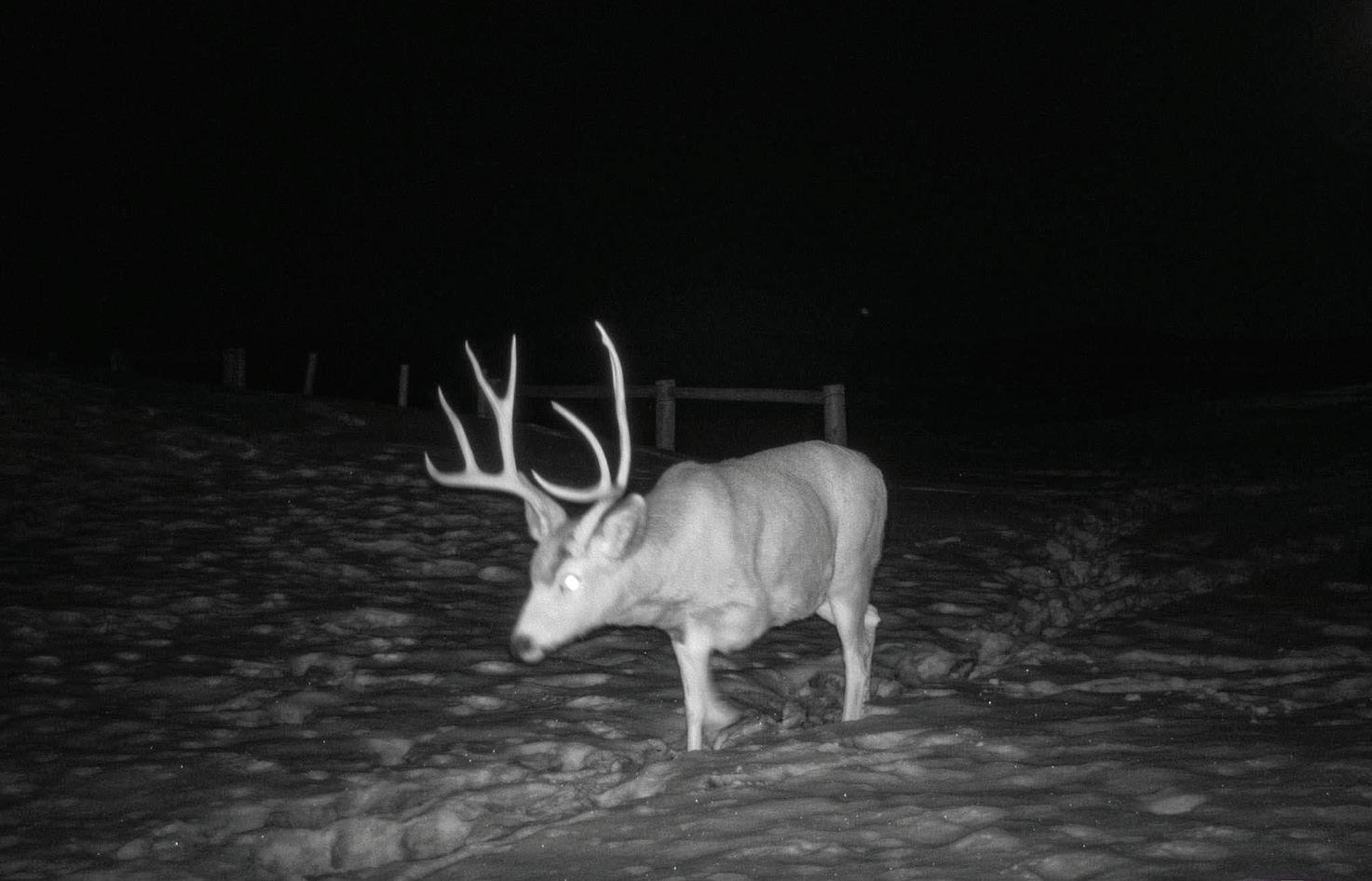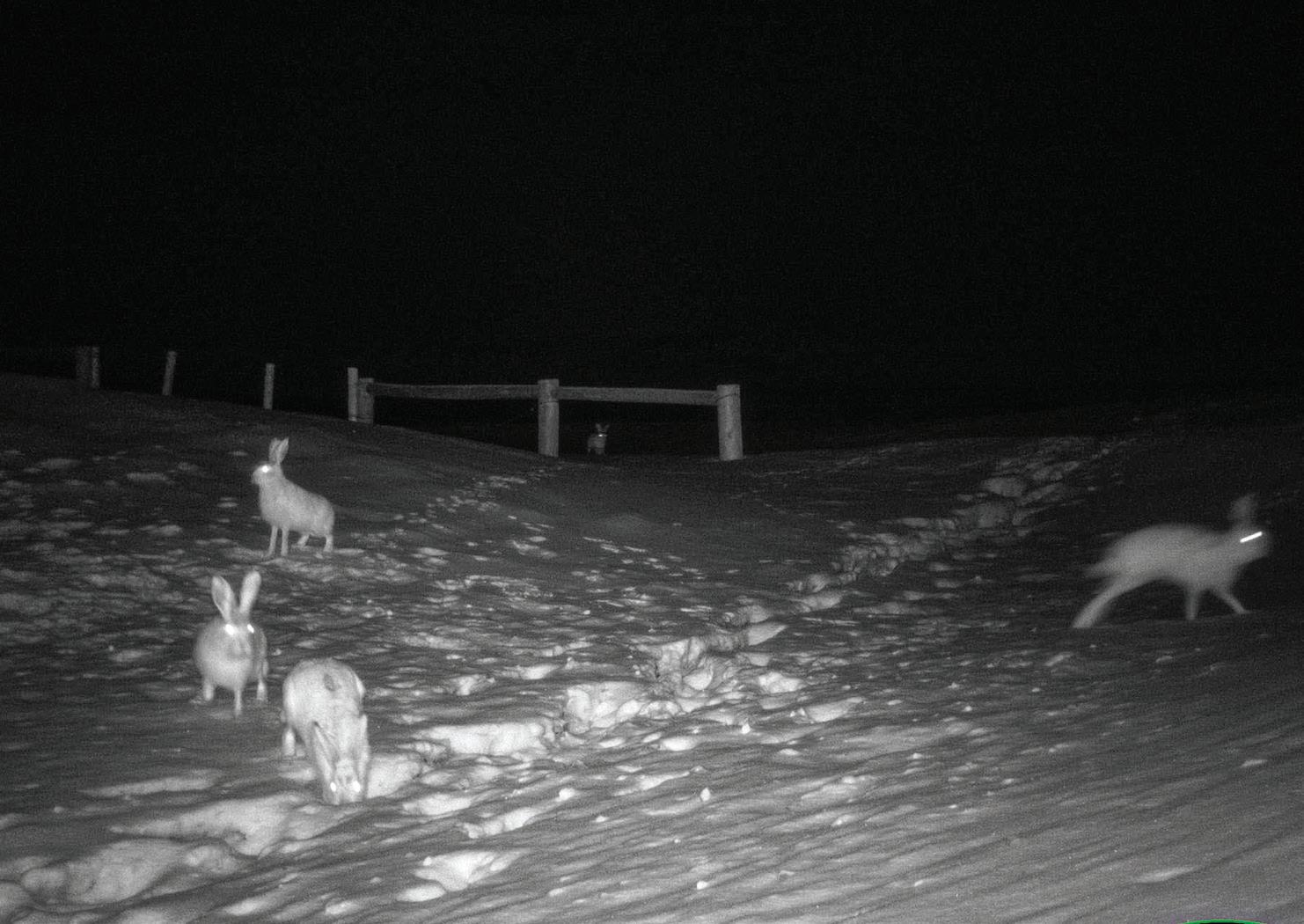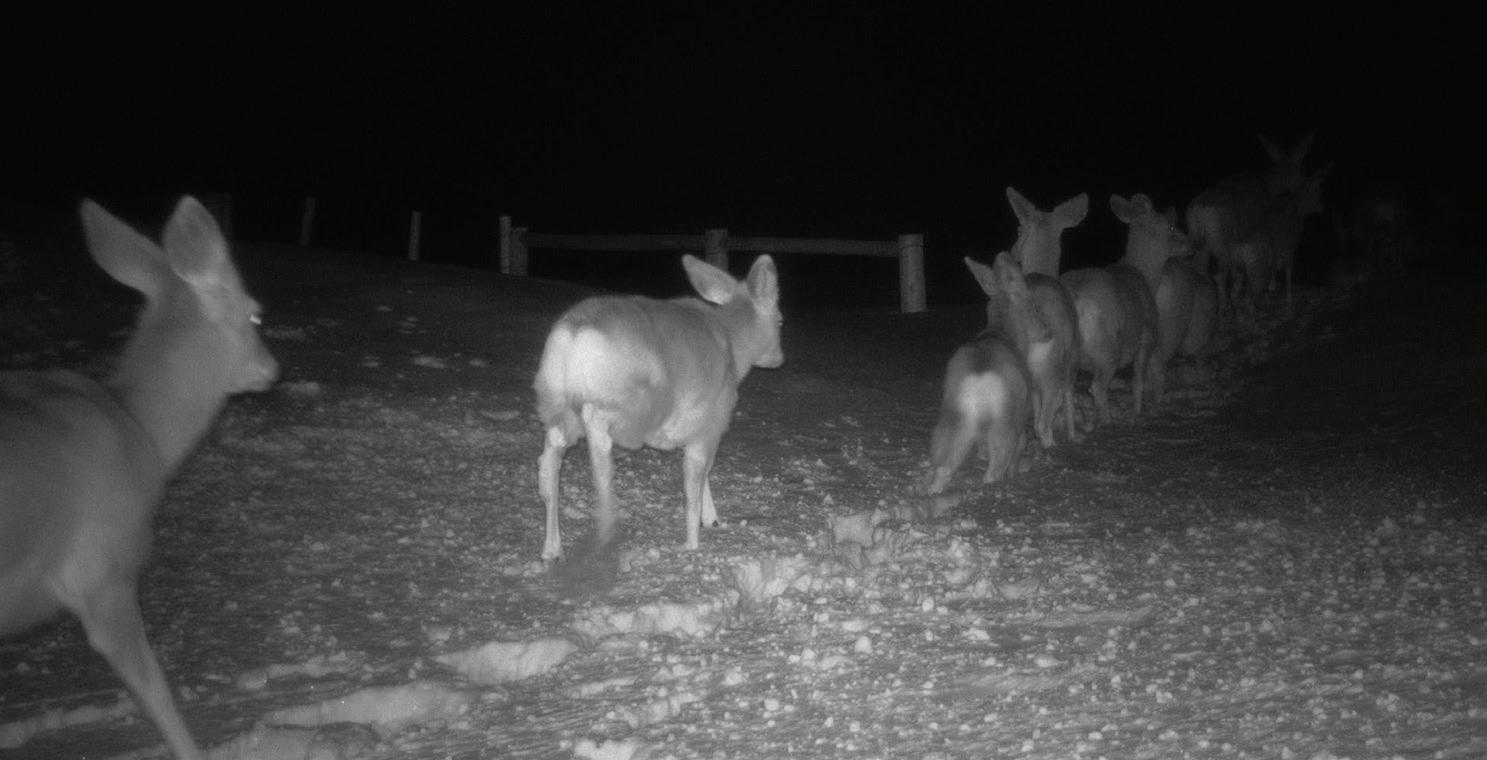
5 minute read
Dry Piney Project News
by WYDOT
Underpasses already seeing wildlife usage
Environmental Services program monitors wildlife projects throughout state
By Jordan Achs
One ray of positivity during such a harsh winter season for Wyoming’s wildlife has been the Dry Piney wildlife crossing project. While it was once an area with some of the highest rates of vehicle-animal collisions statewide, recent monitoring suggests the project on US 189 between LaBarge and Big Piney is already seeing positive results.
The Dry Piney project was let in 2021 and includes nine wildlife underpasses and 16.7 miles of wildlife fencing on both sides of the highway. Crews with Idaho-based McMillen, Inc. made great progress last summer, completing six underpasses and 35,000 feet of fencing.
In December, WYDOT’s Environmental Services program placed cameras at the two underpasses that have deer fence installed on both sides of the underpasses, and the results have already been encouraging.
“The cameras at one of the underpasses were triggered several hundred times during the first three months of monitoring, and the cameras at the other underpass were triggered over 1,000 times,” said Tom Hart, wildlife specialist with WYDOT’s Environmental Services program.
Hart added tracks in the snow revealed deer are even using an underpass that isn’t fully fenced in yet, despite having the choice to cross the highway at grade to the south of the structure.
With snowpack beyond average in that area of the state, there were concerns that drifted snow would limit the ability for wildlife to use the underpasses at all.
Interchange is published for employees of the Wyoming Department of Transportation by its Public Affairs Office and a number of field correspondents.
Interchange invites submissions from all employees. Please send them to either your district correspondents or to Carlie Van Winkle, Interchange editor 5300 Bishop Blvd., Cheyenne, Wyoming, 82009-3340 or send an email to carlie.vanwinkle@wyo.gov.
Staff
WYDOT Director, interim Darin J. Westby, P.E.
Public Affairs Manager
Doug McGee
Editor
Carlie Van Winkle
Contributors
Jordan Achs Public Affairs
Matt Groth Public Affairs
Mark Horan Public Affairs
Carlie Van Winkle Public Affairs
Andrea Staley District 1
Jeff Goetz District 2
Stephanie Harsha District 3
Laura Dalles District 4
Cody Beers District 5
Sgt. Jeremy Beck Patrol
Be sure to check out the online version of Interchange at http://issuu.com/ wydot.pao or click on the link found on the employee’s internal website home page.
“Fortunately, it appears that the underpasses remained open enough for animals to still traverse the passes,” WYDOT Resident Engineer Jennifer Hoffman said in a recent quarterly update about the project.
The project is a little more than halfway complete, with work expected to begin again May 1 after the big game winter range restriction expires. Hoffman said in the quarterly update that work is on track to meet the October 2023 completion date.
Environmental Services continues work even after the construction cones are removed. Hart said they monitor the wildlife crossings for at least three years after a project is complete “to determine whether or not the crossing structures are effective at safely moving large ungulates over or under our highways.”
“This allows us to make changes to improve use of the structures by wildlife, if necessary,” he explained. “For instance, we noticed that one of our Baggs underpasses was not draining properly. The water backed up and froze during the first spring migration after construction. The deer stopped using the underpass because it was like an ice skating rink. We noticed this quickly thanks to the photos and site visits, and our maintenance folks in Baggs corrected the problem in short order.”
The program also uses this data to study how wildlife behaves at the different types of structures around the state. For example, mule deer are comfortable with underpasses; Hart said they will even use old machinery underpasses to cross under Interstate 80.

Pronghorn are a little pickier and tend to avoid crossing under a highway. Monitoring at Trappers Point, a wildlife crossing project near Pinedale, showed pronghorn had great success using the two overpasses there.

While Dry Piney does not include an overpass, WYDOT is experimenting with a larger arch underpass where pronghorn tend to try to cross the highway.
“We are hoping that the pronghorn will use the arch underpass since it has a greater openness ratio, which means it should appear larger and more open to the pronghorn than the box culverts,” Hart said. “An arch underpass is much less expensive than an overpass, and the mule deer will use the arch underpass as well.”
Hart explained that over time, usage of the crossing structures grows as more animals learn about them and become accustomed to them. Predators and smaller animals also take advantage of the safe crossings.
“We typically see at least an 80 percent reduction in animal-vehicle crashes for our wildlife crossing projects,” Hart said.
Wildlife fencing is a big reason the underpasses can be successful. More than an average fence, wildlife projects include 8-ft. high exclusionary fence, which keeps the animals out of the right-of-way and helps guide them to the next crossing structure. WYDOT also includes periodic escape ramps, also called jumpouts, which help animals who do make it into the right-of-way get back to safety.
Maintenance is key, however. Hart explained some animals still find their way onto the highway due to gaps under gates and the fence, holes in damaged fence, gaps between cattle guard wings and fence posts, gates to access roads being left open, cattle guards filling in with snow where deer can walk across them, and other factors.

WYDOT continues to look at ways to reduce wildlife-vehicle collisions on state highways, including an ongoing fencing project on Interstate 25 between Buffalo and Kaycee and phase two of the Jackson South wildlife project.
What is Environmental Services?
When you live in a place that is one of the world’s bucket-list vacation destinations, you want to preserve the natural and cultural resources that make the state so great. While it may not seem at first glance like WYDOT would be involved with this kind of preservation, the Environmental Services program plays a big role in ensuring WYDOT projects keep Wyoming wild.
The program, housed within the Planning Department, is responsible for completing natural resource impact evaluations to inform and prepare National Environmental Policy Act documents. These documents include categorical exclusions, environmental assessments and environmental impact statements which are required for WYDOT to receive and expend federal dollars.
Environmental Services is also responsible for compliance with the National Historic Preservation Act, Endangered Species Act, Clean Water Act, and state rules such as the Governor’s Executive Order for Sage-grouse.
A variety of natural resource impacts are evaluated by Environmental Services for each federally funded construction project across the state.
“Typically, three categories of impacts may occur on any given project including wetlands, cultural resources and wildlife resources,” said Scott Gamo, Environmental Services program manager. “We have staff with expertise in each of those resource categories and also provide expertise with right-of-way reclamation and NEPA coordination.”
One of the major activities outside the day-to-day efforts has been Environmental Services’ involvement with wildlife crossings. A strong concerted effort began in the spring of 2017 when the Wyoming Game and Fish and WYDOT hosted a joint meeting in Pinedale along with other interested parties to take a hard look at wildlife mortalities and roadway collisions and where these intersect on our state highways. Environmental Services staff further collaborated with WGFD staff and external partners to develop a refined list of statewide projects; one of those projects was the Dry Piney project located in District 3.
The program works closely with other headquarter programs, the Districts, FHWA and local groups and stakeholders to help accomplish WYDOT’s mission and to keep Wyoming as a premiere destination to live, work and play.







